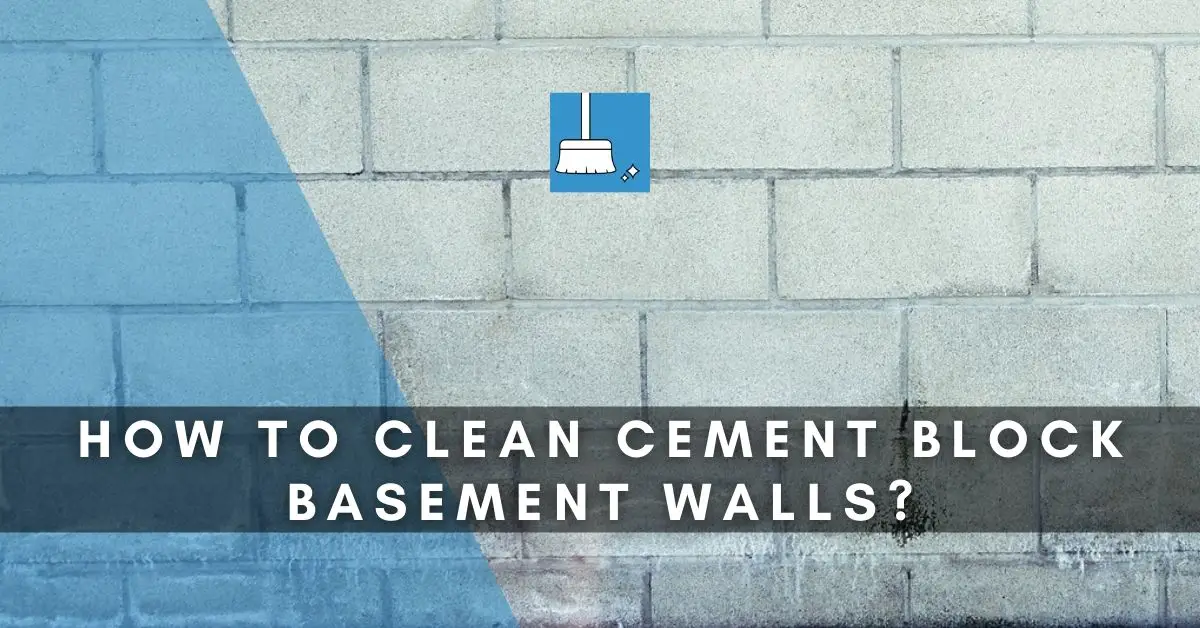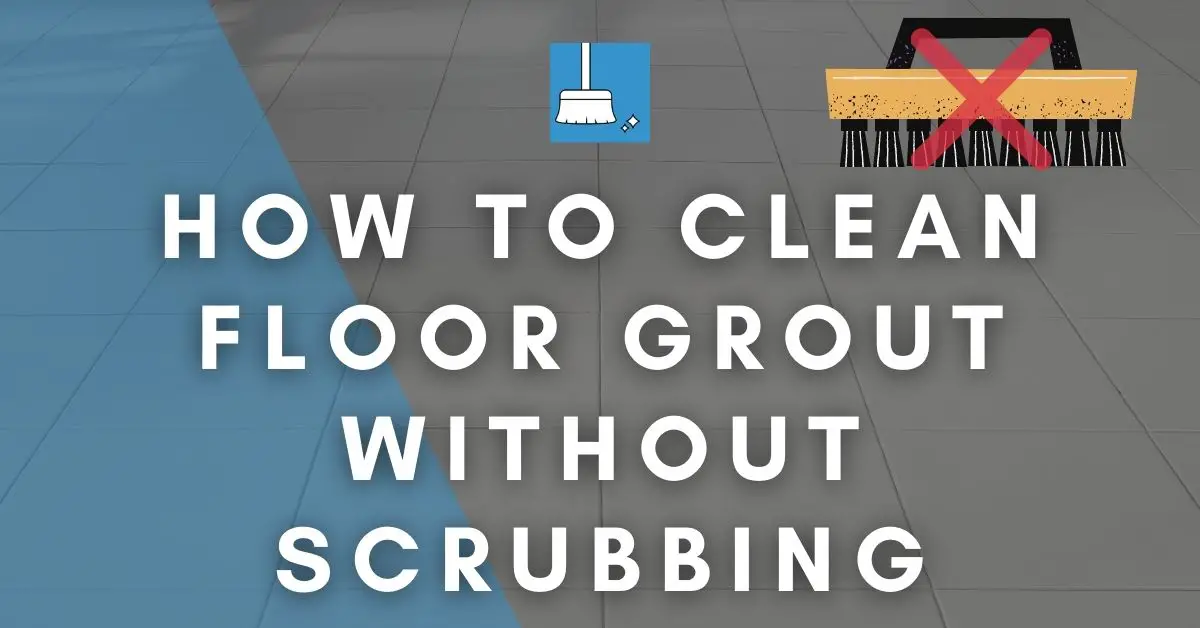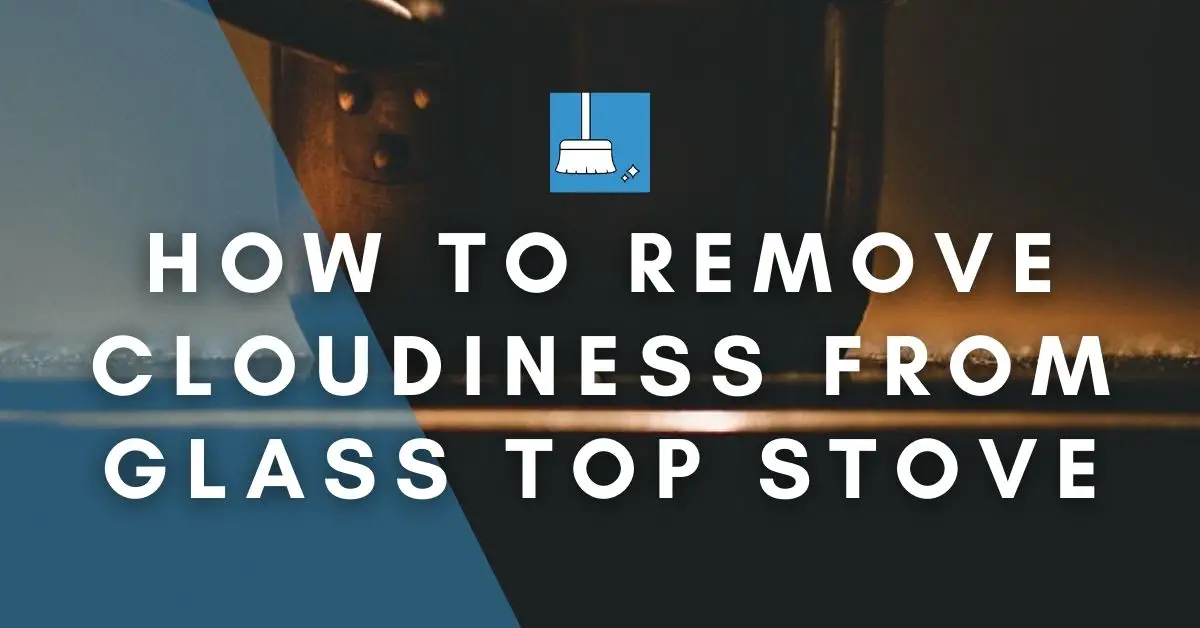It is not uncommon to have cement block or cinder block walls in our basements.
Since it is damp and dark most of the time, and this is an area that might be neglected for long, the walls tend to have mold growth on them or a white chalky material called efflorescence.
Whether it is efflorescence, mold, or rust stains, we will see step-by-step methods to remove them.
How to Clean Cement Block Basement Walls?
Method 1: For Cleaning Moldy Cement Block Basement Walls
Usually, basements are poorly lit by sunlight and also have higher moisture levels due to leaks in the foundation and other plumbing issues. These are ideal conditions for Mold (Black, white, blue, green, etc.) and mildew spores to thrive.
Mold and mildew need to be removed as it is injurious to health. Using soap to kill mold will prove to be ineffective. We will need stronger materials.
There are two ways to clean mold off your basement walls.
Option A: Using Vinegar or Hydrogen Peroxide
We can use either Vinegar or Hydrogen peroxide for removing mold. These are effective in removing most species of mold.
YOU’LL NEED
1- Long handle brush
2- Detergent
3- Bucket
4- Water (Warm)
5- Mop
6- Spray bottle
7- Distilled Vinegar / 6% Hydrogen peroxide
8- Garden hose (optional)
9- Dry rag/towel
STEPS
STEP 1: Use a long handle brush to sweep down the basement wall off any surface dust and debris.
STEP 2: Prepare a solution of 2 cups of detergent in a gallon of water in a bucket and apply this solution over the wall with a mop. This will clear the wall from dirt and grime.
Th United States Environmental Protection Agency (EPA) recommends using detergent and water for mold removal.
STEP 3: In a spray bottle, mix vinegar and water in equal proportions. Spray this solution over the whole wall. Simultaneously, scrub the wall with a hard plastic scrub brush.
Alternately, you can use 6% Hydrogen peroxide by pouring it in a spray bottle and spraying it over the wall. Let it rest for 7-8 minutes.
STEP 4: Wash the basement wall with warm water either using a garden hose or using a sponge dipped in clean water.
STEP 5: Dry the wall by wiping with a dry rag, allowing for ventilation, and/or turning on the fan.
Option B: Using Borax
Borax or sodium borate is a naturally occurring mineral that is made with water, oxygen, sodium, and boron. It is also an environment-friendly cleaning agent that takes care of concrete and cement as well.
The PH of damp and dark environments such as basements ranges from 3 to 8. These ph levels make the environment acidic and ideal for mold to thrive. Borax kills mold by increasing the pH to inhibit its growth.
YOU’LL NEED
1- A bucket full of warm or hot water (1 gallon)
2- 1 cup Borax
3- Hard bristled brush
4- Soft-bristled brush
5- Bucket of water – for rinsing (Optional)
6- Garden hose
7- Sponge (2-3)
STEPS
STEP 1: Prepare a solution of warm/hot water and 1 cup of sodium borate/borax.
Never mix borax with bleach as it creates poisonous gases. (Source)
STEP 2: Use a sponge to apply this solution over the moldy surface of your cement block wall.
STEP 3: Using a hard bristled brush in circular motions, scrub the cement wall.
STEP 4: Let the solution sit on the wall for 5 minutes and then scrub with the brush again.
STEP 5: Using another soft-bristled brush, brush away the surface borax from the wall.
STEP 6: It is optional to rinse away the borax solution from the wall as this layer will prevent future mold growth. In case you do plan to rinse it, use a garden hose (this may flood the basement) or a sponge dipped in clean water (several times) to clean the wall.
Method 2: Getting Rid of White Chalky Efflorescence from Cement Block Basement Walls
Most times, in old cement walls, you will find minerals and salts come to the surface in the form of a white ugly-looking residue. This is called Efflorescence which should be removed as soon as possible.
We will use soap and vinegar in this method. Vinegar can neutralize the alkalinity of efflorescence and mixing vinegar with dish detergent is completely safe.
Note: Never try to seal the cement wall if there is white chalky residue over it because it will become cryptoflorescence which will weaken the wall and may be the cause of chipping and even a collapse.
YOU’LL NEED
1- Plastic sheets
2- Stiff Plastic brush
3- Water
4- White distilled vinegar
5- Dishwashing detergent
6- Sponge
7- Bucket
8- Garden hose (optional)
9- Dry cloth
STEPS
STEP 1: Use plastic sheeting on the basement floor (the area where you will be cleaning the wall). You may choose to work one wall at a time and accordingly shift the plastic sheet as you move to the next wall.
STEP 2: Use a stiff brush to scrub off the surface chalky residue from your cement wall.
STEP 3: Prepare a soapy solution of 1 Gallon water, 2 cups of vinegar, and 2 cups of dishwashing detergent.
STEP 4: Using a sponge, apply this solution over the cement wall. Now, use a plastic bristled stiff brush to scrub the efflorescence off the cement wall. Use circular motions while scrubbing. You will see the white chalky material coming off gradually.
You may choose to use a drill motor brush (with hard bristles) if you have one and do not want to scrub manually.
STEP 5: Now, using a garden hose, wash down the soapy water from your basement wall, if a little water flooding is not a problem for you.
Otherwise, take a sponge, dip it in a bucket of clean water, clean off the soap from the wall. You will need to again and gain squeeze off the soapy water from your sponge and also change the bucket water a few times.
STEP 6: Finally, use a dry soft cloth to wipe down your cement basement wall. Open your basement windows and turn on the fans to let the cement wall dry.
Warning: Do not leave the traces of Vinegar sit on the cement wall. Acis weaken the binder material the holds the wall together. This means you will need to clean off your wall thoroughly with clean water.
Tips – Important!
1- To reduce the chances of mold, efflorescence buildup in the future, reduce the Basement humidity by fixing plumbing leaks and other water problems. Using a dehumidifier will also reduce the humidity levels.
2- To reduce water infiltration, foundation drainage should be adequate.
3- Never apply sealants or any kind of paints to cement basement walls as these will not work and in time lead to other problems, the solutions of which will burn a hole in your pocket.
Conclusion!
Whether it is white powdery efflorescence, mold, rust stains, or simple dirt and grime that you can’t stand to see on your cement block basement walls, we have seen the methods by which you can get rid of them.
Make sure to follow the additional tips to maintain the humidity levels in the basement to avoid these from coming back.






